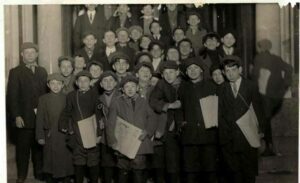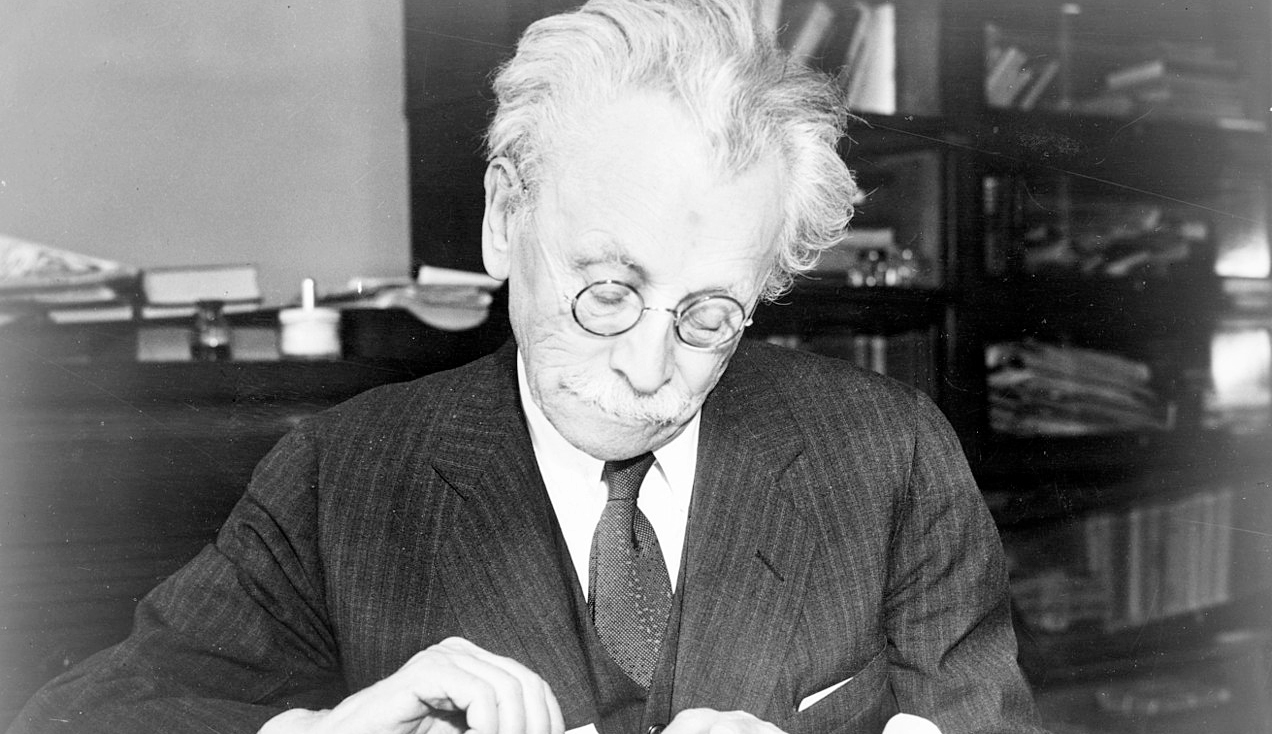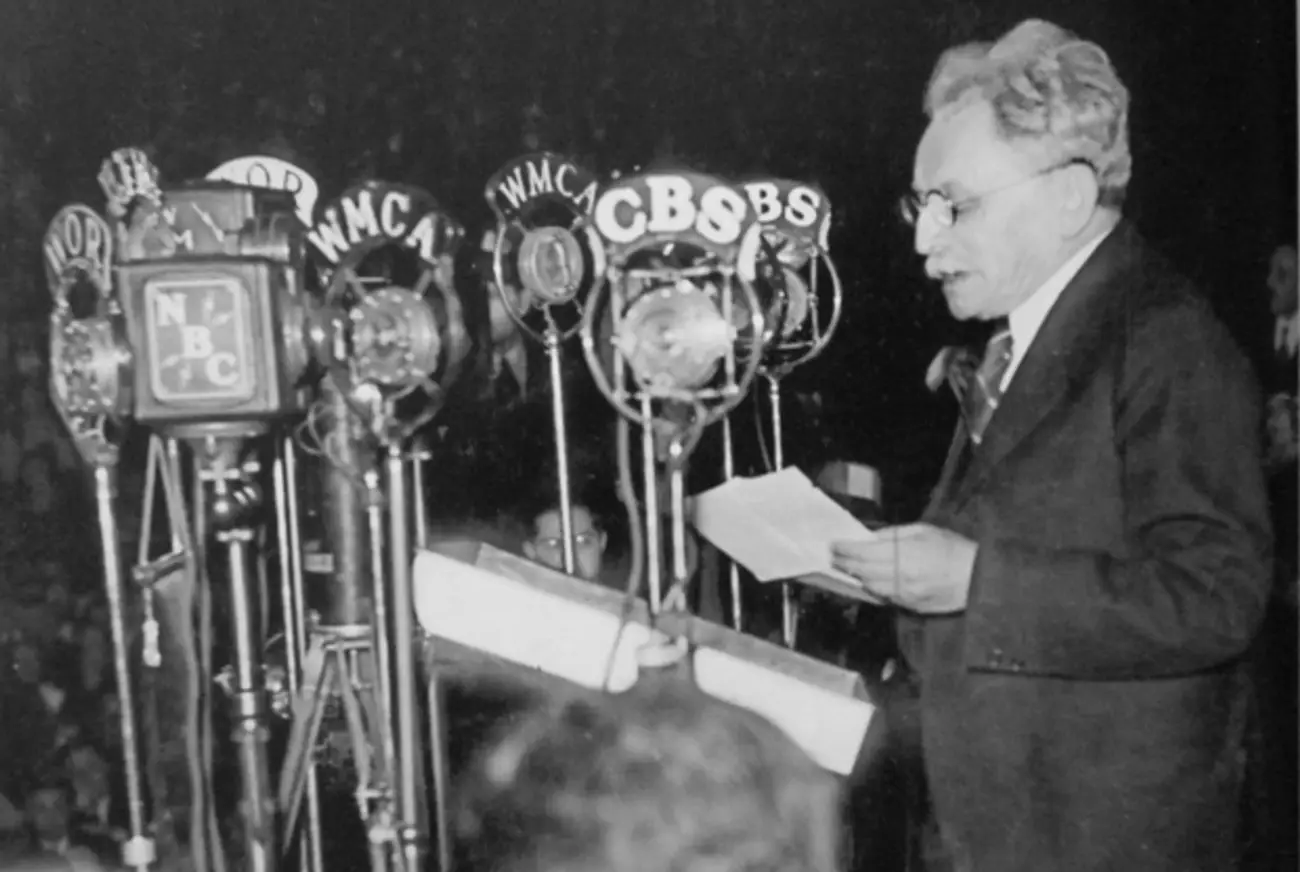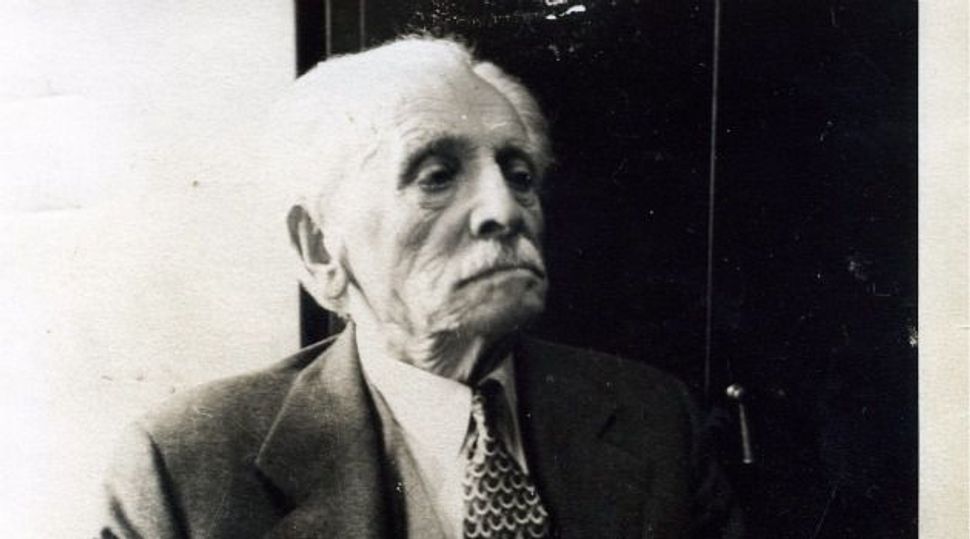How fortunate that my essay on Abraham Cahan should have quickly achieved its primary purpose of getting us to think again about the man, his work, and his influence. Two historians enrich our discussion from their own valuable perspectives—Rick Richman as part of his ongoing studies of Zionism and portraits of Zionist leaders, and Gennady Estraikh, a specialist in Soviet Jewish history, by tracking some of Cahan’s political shifts in response to changes in Soviet, Jewish, American, and world affairs.
Richman’s account of the 1940 Madison Square Garden rally of the Workmen’s Circle brings alive Cahan’s pivotal role as anti-Communist and American patriot who called for America’s entry into the war against Hitler. Estraikh’s critical judgment of Cahan—“not a prescient political leader,” “sharp observer rather than a deep thinker,” and hugely disliked by professional and political rivals—makes the case for Cahan’s outsized influence from the negative angle of how much disapproval he faced down during his almost half-century of editorial rule.
Estraikh casts Cahan as a kalter Litvak. As a bit of a cold Lithuanian myself, I appreciate some of that quality in a writer and thinker, but Cahan was also the man who translated into Yiddish Leo Tolstoy’s Kreutzer Sonata—a novel censored in its time for its sexual passions and its apparent exoneration of a husband who is his own Iago. Cahan’s favorite writer was Chekhov, and his friends among the American writers and journalists thought of him as the warm-blooded Russian. In the style of the Russian intelligentsia, he did much of his political and social thinking through the writing of fiction. Another American Jewish writer, George S. Kaufman, once quipped, “One man’s Mede is another man’s Persian,” and so too with the reputation of Abraham Cahan.
I, too, first encountered Cahan as a villain. The American Yiddish poets I was studying, who wrote and published from 1907 to the end of Cahan’s tenure, considered the daily Forverts yellow journalism, the enemy of fine literature, and those who occasionally published in the paper did so reluctantly, to pay the rent. The lyric poet Mani Leib worked for a while on the famous “Bintel Brief” advice column and Jacob Glatstein complained of having been fired barely a week after he had been hired by the paper. He described his “Japanese-style” dismissal: in Japan, when a manuscript is returned to a writer the editor lets him know that his work is so heavenly that it would be the greatest profanation to publish it in a mundane outlet like theirs. Cahan had learned that his employee was a modernist poet and something of a political rebel. He congratulated Glatstein for acting as a young man should—as he would have expected his own son to behave—and therefore chose to refrain from undermining his rebellion or literary career!
A legion of such stories corroborates Ab’s “autocratic” rule over his socialist domain (in Yiddish as in English he was always addressed as Ab). Glatstein remembers his dismissal being conducted in English, confirming another of the criticisms directed at the editor of the largest-circulation Yiddish newspaper. The first book about the Yiddish press in America called it “an Americanizing agency,” largely on the basis of the English terms the Forverts freely used in its reportage and editorializing. Cahan’s approach to language was pragmatic. He wanted to facilitate his readers’ integration into America through the uses of both English and the handkerchief. Yiddishism was an ideological branch of the socialist movement that believed the Jewish language, which was the repository of Judaism, could also preserve its essence. Cahan was emphatically not a Yiddishist in his dedication to Jewish national survival. With his wife he spoke Russian, in writing fiction he switched from Yiddish to English as soon as he felt able, and he undoubtedly would have approved the paper’s later evolution into English as its readership required.
But it is only because his influence was so enormous that he could be accused of having thwarted the development of Yiddish literature. From his early attacks on the playwright Jacob Gordin, to his refusal to publish the full sequence of Sholem Asch’s trilogy on the emergence of Christianity, Cahan exerted tremendous power over a literature that had no government support or stable marketplace. The emergence of the novel was everywhere dependent on publishing opportunities, but the dispersion of the Jews made it hard to find sustainable outlets. Forverts was that place for writers fortunate enough to claim it, but many more failed than succeeded.
Cahan’s 1889 essay on “Realism” advocates for the kind of fiction he wrote and championed as against “art for art’s sake,” or writing “limited to the realm of the beautiful.” Although the essay itself would tend to prove Gennady Estraikh’s low opinion of him as a theorist, Cahan’s influence as a critic and publisher was often to the good. One readily sees how much stronger Israel Joshua Singer became as a novelist once Cahan weaned him from his early experimentalism and brought him to the Forverts. Singer’s younger brother Isaac Bashevis published some of his finest stories in literary magazines, but he became the novelist we know at the Forverts under the serializing discipline of so many words per week. And surely David Bergelson would have done better to stay at the paper in the mid-1920s than return to the Soviet Union which he deemed the only secure Jewish cultural center in the world. (Bergelson was murdered by Stalin, along with other Yiddish literary figures, in 1952.)
The heaviest firepower directed against Cahan came from the Communist Freiheit, which was both a competitor and a command post of Soviet-sponsored activity in the United States. An important history remains to be written about the clash between these two newspapers from the Freiheit’s founding in 1922 to its closing in 1988, shortly before the collapse of the Soviet Union. Abraham Cahan’s biographer Seth Lipsky writes, “One doesn’t have to accept the suggestion that crops up from time to time that Cahan was the first neoconservative” (someone punned, “neo-Cahan”), but both Cahan and the neoconservatives made the same transition away from Marxism to appreciation of America and Judaism, and both came under similar attack from the left for their deviation, their bourgeois compromises, their reactionary betrayal. As I pointed out in my essay, some of the New York intellectuals acknowledged their debt to this precursor.
When Cahan came to America in 1882, as part of an immigration without political leaders or religious authorities, he created in the Yiddish press a platform for leadership through which he exerted singular power until other institutions rose to replace it. We have first to know what he accomplished in his time before we can hope to do better in ours.
More about: Abraham Cahan, American Jewish History, Forward






